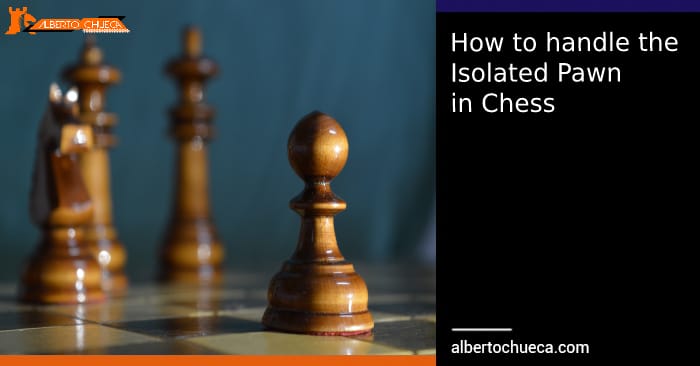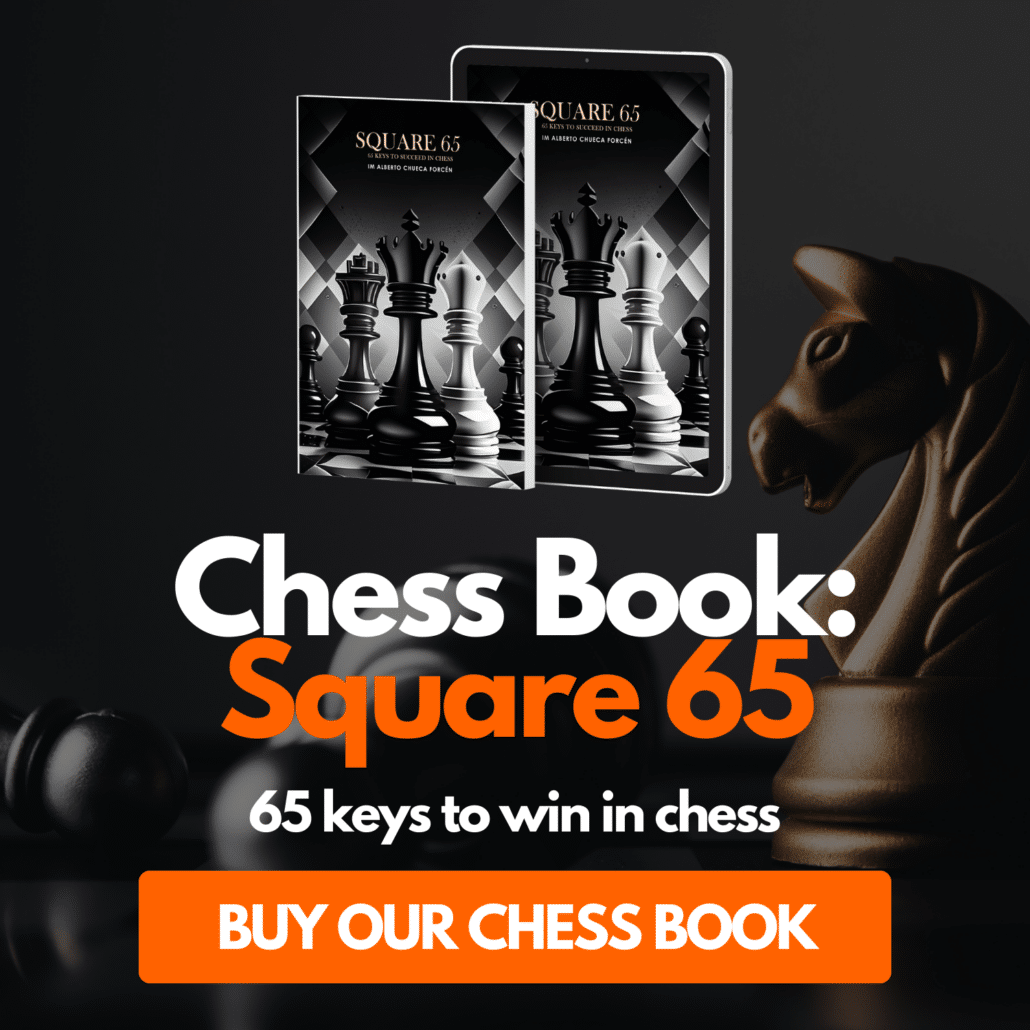Table of Contents
Isolated Pawn Definition
A pawn is said to be isolated if there are no pawns of the same color beside it. In other words, the isolated pawn is a lonely pawn that does not have support from neighboring pawns and can be a worrisome weakness depending on the nature of the position.
The concept of the isolated pawn is very important because most beginners, intermediate, and even advanced players in chess having such pawns in their games lose regularly due to improper handling of the position.
Isolated pawns can arise from different openings such as the Queen's gambit, Tarrasch defense, Nimzo-Indian defense, Slav defense, French, and the Caro-Kann defense.
A very common example of the isolated pawn is the ‘isolated queen pawn' where the pawn is on the d-file and is usually referred to as an Isolani.
Let's have a look at the following position;
In the position above, it is easy to notice that white has a lot of weakness in his position while black has a fairly healthy pawn structure. In white's position, there are three isolated pawns located on the d4, f2 and h3 squares because these pawns are far apart and can't assist each other.
White would experience some difficulty in defending this position but with accurate play, it would lead to a draw.
Now, let's add some major pieces to the same position;
The Queen and rooks for both sides have been included and I am sure you can now notice the glaring weakness of the d4 pawn.
Black pieces are perfectly placed, the rook is nicely placed on the d5 outpost, the black queen in addition to the rook on d5 is placing pressure on the isolated d-pawn and also eyeing the h3 pawn, the rook at f8 can be moved to d8 to place additional pressure on the isolated pawn.
However, in the position above, black is winning as he can immediately throw in …c5! exploiting the fact that white can't play dxc5 due to the double attack on the rook at d1 and the queen can't also capture the c5 pawn, so black would win the d4 pawn and with concise play, slowly proceed to extract the full point.
The two positions above illustrate the vulnerability of isolated pawns when there are no minor pieces left on the board.
If a bishop or knight was present in the positions, then the evaluation could easily change due to the fact that these minor pieces can easily defend the isolated pawn or distract the opponent from attacking the pawn.
One common rule is to avoid minor pieces exchange especially when you are the one having the isolated pawn.
Isolated, Passed, and Hanging Pawns
To avoid confusion, let's quickly compare isolated pawns with passed and hanging pawns. Isolated pawns can be passed pawns while passed pawns are not always isolated pawns.
Don't also be quick to mistake isolated pawns for hanging pawns as both are quite different, hanging pawns occur when pawns on neighboring files are separated from other pawns, for example, if white has two pawns (c4 and d4) far from other pawns, then they are referred to as hanging pawns.
The image above shows black's hanging pawns at c5 and d5. Similar to isolated pawns, hanging pawns can be advantageous or just simply ugly depending on the dynamics of the involved position.
Whether you are playing with or against the isolated pawn, there are certain guidelines that would help you to properly handle the positions that may arise. In the following sections, I would be sharing strategies that should be considered;
Strategies to follow when playing with the Isolated pawn
1. The first and most important rule is to avoid minor pieces exchange, as an exchange would considerably weaken your hold on the isolated pawn.
2. At the right moment, you should trade off the pawn to gain piece activity. A common way of doing this is by sacrificing the pawn (also called a breakthrough) to blockade and reduce the activity of your opponent's pieces.
3. In Queen's pawn related openings, a standard way of playing with the isolated queen pawn is by creating threats on the opponent's kingside.
For example, creating a Queen+Bishop battery ( Qd3, Bc2) against the king, maneuvering your knights to outposts supported by the isolated d-pawn to pressure the kingside, pushing the f-pawn to weaken the kingside protection, etc.
Strategies to follow when playing against the Isolated pawn
1. Try to exchange all the minor pieces on the board. It is easier to create threats and win the isolated pawn when only the queen and rooks are present on the board. When it comes to king and pawn endgames, the side with the isolated pawn has a more difficult task.
2. Another feasible approach is using the square in front of the pawn as a blockading square, In other words, by blockading the pawn (with preferably a knight due to its octopus-like range), the activity of your opponent pieces can be greatly limited.
3. Use the principle of two weaknesses. Sometimes, the side with the isolated pawn would try to protect the pawn with all the pieces, when this happens, you can then try to divert your opponent attention by creating another weakness on the other side of the board.
By calmly applying and increasing pressure, your opponent forced to shuffle his pieces on both sides of the board would eventually crack. This is a very effective principle in chess.
I would end this article by analyzing a model game that illustrates the strategies and concepts that have been discussed so far.
This game was played by Lajos Portisch, a strong Hungarian grandmaster (White) against Anatoly Karpov (Black), a former world champion in Milan, Italy 1975.
Black's last move was retreating the bishop from b4 to e7. White decides to go for the standard plan of Bc2, Qd3 directly aiming at the black king.
13. Bc2 Re8 14. Qd3 Rc8 and now white goes for the thematic pawn breakthrough with 15. d5!
White sacrifices a pawn to create a target to go after later, to blockade black pieces and improves the activity of his pieces.
16. exd5 Black can't capture with the knight as that would lead to a mate after 17.Qxh7+
16… Bg5 Ne4 Black correctly decides to give back the d-pawn as white threatened 17. Bxf6 Bxf6+ 18. Qxh7+ Kf8 19. Qh8#
17. Nxe4 dxe4 18. Qxe4 g6 19.Qh4 h5 20. Rad1 Qc7 21. Bxg6 fxg6 22. Qc4+ Kg7 23. Bf4 Ba6 24. Qc3+ Bf6 25. Bxc7 Bxc3 and after some set of exchanges, the players agreed to a draw. This game presented ways of dealing with the isolated queen pawn.








